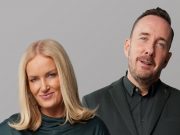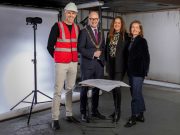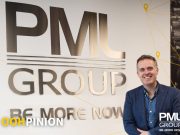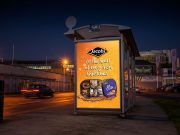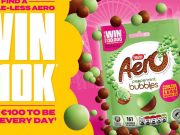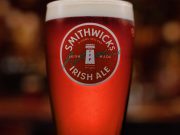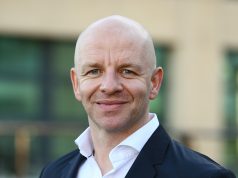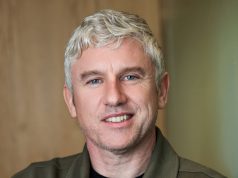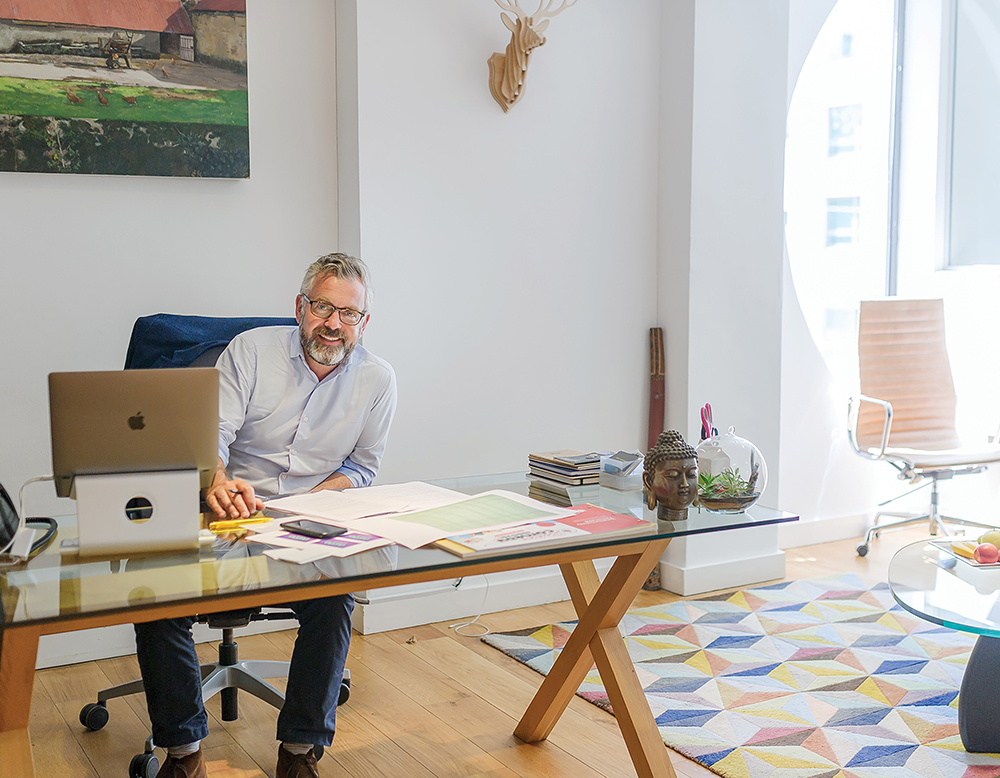
With more and more brands looking at creating live brand experiences for consumers, the Dublin-headquartered company Verve has been riding the experiential wave for over 28 years and has now established itself as leading Irish and international player in the market, as founder and CEO Ronan Traynor explains to John McGee.
Whether we know it or not, we are living in the experience economy as more and more companies recognise that the experience customers have of their brands is closely linked to future business growth. For their part, often fickle and consumers are increasingly looking for something different from their brand interactions and the traditional one-way marketing messaging no longer works in isolation. While the experiences that consumers feel or remember can come from a wide number of different brand touchpoints, the collected memory they have of a particular brand or service will ultimately determine the brand’s fortune.
As most marketers know, building brand affinity can be a tricky task. But if they give people what they want- within reason- then there’s a good chance that their experience of the brand will turn them into loyal followers. Increasingly, consumers are looking towards experiences and being part of something memorable that they normally wouldn’t encounter in their day-to-day lives.
All of this is grist to the mill for Ronan Traynor and Verve, the company he founded 28 years ago. Starting out with one man and a van and being thrown the crumbs from the agency table, the company has grown to employ 80 staff in Dublin, 12 in the UK and has a turnover in excess of €25m, making it one of the largest independent marketing services companies in Ireland.
“Yes, we’ve been around a long time and I’ve witnessed a lot of different economic cycles, including recessions. When I started out it was just me and a van and thankfully the business has grown organically ever since. But one of the big things I learned was that an agency is only as good as the people that work for it and I’ve always tried to do is recruit people who are better than me at different things and we also invest a lot in developing our relationships with clients. Thankfully, we don’t get the crumbs from the table anymore because we are now sitting around the client table with other agencies,” says Traynor.
This strategy is obviously paying off. Hardly an experiential event or gig takes place in Ireland without some Verve connection. Think of any festival, a food event, a sports tournament like the PRO14 or a big product activation or launch, and somewhere in the background will be Verve employees making the magic happen. Further afield in places like Wimbledon, Aintree, Royal Ascot and any number of European music festivals like Decode or Benecassim in Spain, Verve will also be on the ground working for one of its many clients who include the likes of Diageo, Microsoft, Google, LinkedIn, Facebook, JustEat.ie, Heinz, Coca Cola, Electric Ireland, Vhi and Unilever.
“Thankfully, we have enjoyed long-term relationships with many of our clients. For example, we have been working with Diageo and Coca Cola for eighteen years, Microsoft for twenty years, Google for ten years and Unilever for nearly twelve years. So, it’s really important that you get to know your clients and their business and try and provide them with solutions to their problems,” says Traynor.
But it would be wrong to think of Verve as an events business. While it does organise large-scale events like Christmas and Summer parties for clients like Google and LinkedIn, the company offers its clients a full-suite of creative services as a strong digital and social offering which dovetail with a particular event or wider campaign.
“Our creative team is knocking out social, digital, doing strategy, as well as brand communications and internal client engagement. One of the reasons why we got into digital was because before then digital didn’t really get or understand experiential. So, you’d have an offline live experience, but it was like hitting the kerb when you tried to get it online and you’d lose half the people because there was too many iterations and you had to do a load of different things to make it work. Every hoop you have to jump through, you lose 30% of your potential audience. So, we created our own digital department about five years ago and this allows us to seamlessly do all the pre-event and post-event as well as during the event itself. And it works,” he says.
By way of example, he cites a campaign launched by baked beans manufacturer Heinz to celebrate 50 years of the famous “Beanz Meanz Heinz” last year.
“We worked with the Heinz marketing team, who tasked us with the design, build and management of bespoke pop up cafes in three locations each of which served up Heinz beans in a number of different ways. But instead of taking traditional currency as payment, we asked customers to pay for their beans by social means by posting a photo of their experience in the cafe on social media and tagging it with #HeinzBeanz50.
“Apart from setting up the pop-up cafés, we did all the digital and social around it. So, our guys would have created a lot of content around it like mobile graphics, animations, video pieces and quizzes all of which was great fun. But we also tapped into the retro dimension and used old Heinz ads to reinforce the brand’s heritage but infusing it with a modern-day relevance. But it was a huge success for them. Even Conor McGregor got in on the act. As he was passing by one of the cafés on his way to Brown Thomas to get fitted for a suit, he said that he loved beans and that he grew up on them. He thought it was a fantastic idea. When he asked what he could have, we told him anything he wanted so long as he tagged it on social media- which he did. And within an hour there was half a million likes: it was just phenomenal. Heinz loved the work and they even took the concept to the UK and Australia and, as a result, we won the digital account for the brand,” says Traynor.
Rugby fans may also recall a competition run by Guinness as part of the build-up to the recent PRO14 final which offered the winner a hotel room with a twist as well as the best seats in the stadium for the final.
“We essentially created a hotel suite in Aviva Stadium and called it the Guinness Rugby Hotel. Guinness has always had a really deep-rooted involvement in rugby and in the run up to the final, people could enter a competition for an overnight stay in the suite the night before the big game. Then, the morning of the match, they wake up – see the pitch on front of them – and get served breakfast in the suite as well getting to see the guys togging out and they get to talk to some of them. They also got to bring 16 mates who would join them in the suite for a free lunch, free Guinness and then watch the game with former Ireland and Leinster player Mike McCarthy. It was a money can’t buy experience, particularly if you are a rugby fan and it was a tremendous success,” says Traynor.
Some of Verve’s work has gained it international recognition as well as a haul of international awards. In April, for example, it picked an award at the UK Sponsorship Awards for its work with the Pimm’s – which is owned by Diageo- and its management of the Pimm’s All England Tennis Club Pourage. The campaign was designed to promote, activate, and enhance the brand experience of Pimm’s, the quintessential English drink at the equally quintessential English sporting event Wimbledon. The resultant activity successfully enhanced the experience of over 300,000 fans over a two-week period, and provided a premium Pimm’s experience, inside and outside the event.
This partnership resulted in significantly increased sales of Pimm’s during Wimbledon and drove awareness through media channels such as the BBC and ESPN. A high number of people were engaged with in a meaningful fashion, ensuring the campaign influenced purchasing decisions and reinforced the Pimm’s with tennis.
While creating experiences for consumers- and helping brands connect with them- is at the core of what Verve does well, an understanding of what hard-to-target consumers actually want is a different matter. But it helps if you are interacting with them on a daily basis at events and gigs says Traynor.
“We are always on the lookout for new trends and we have guys in here who are essentially trend watchers,” says Traynor.
“We are also good at measuring and listening to social media and listening to what people are looking for and what they want. The great thing is that we’re out every day: we’re on the street, we’re at festivals, we’re in malls and we’re in retail. We give feed-back on everything that we do from the anecdotal stuff and things that we pick up on a day-to-day basis and we share this internally and with our clients. The great thing for us is that we also work in the UK now and we can see what is happening on the ground there too -whether it’s with a Pimm’s drinker or an English, Scottish or Welsh rugby fan. We also have a have a hub in Amsterdam and from there we are looking at getting into some of the smaller European festivals because we are already working on Decode in Madrid and this gives us an opportunity to find out what the kids in Spain are looking for.
“We’re basically designing experiences around the latest trends and we are also trying to predict trends for us and our clients. It can be hard but it’s important. Unfortunately, I’ve seen some big brands get things spectacularly wrong because they may have been given a bogus solution from a media company or agency that included a big deck on demographics and what they think people want but is out of date. And then it is tweaked and presented to the next client who walks in the door. So big brands can entirely miss the mark. I think our great strength is that we are physically and tangibly on the ground reaching out all the time. Everything we do is live, and the feedback is live, so we know straight away what works and what doesn’t,” he says.
Being on the coalface of the marketing world, Traynor has witnessed many changes in the industry down through the years. He has also seen the challenges that many brands face and has enjoyed a bird’s eye view of how they deal with and overcome these challenges. A common denominator in many of the strategies deployed by some of the bigger companies and brands – including those which are clients of Verve- has been innovation and the need for brands to continually assess their relevance in a competitive landscape. Not surprisingly, he has also seen the growth in experiential marketing from a vague concept ten years ago to an integral part of the marketing tool-kit.
“Innovation is key for many large companies and it’s important for them to be agile it’s innovation. And the…It’s very important for large players to be agile and responsive to changes in the marketplace and to consumer preferences and tastes. Diageo, for example, has done really well in terms of innovation and has responded to the rise of the craft brewers by new product launches and its own craft beers. And I know people might say ‘oh, typical of Diageo’ but the reality is that they’ve been craft brewers for over 250 years because they are constantly tweaking and testing new products and its Open Gate Brewery has basically lifted the lid on what’s happening, and people can see for themselves the kind of innovation that’s taking place,” he says.
And the increase in money being allocated toward experiential?
“Without a doubt. Traditional media doesn’t have the reach used to and as Patrick Hickey of Rothco said at a recent Marketing Society seminar, TV is expensive and doesn’t have the reach it used to. So, brands are looking to create more live experiences which people can opt into. They are not something they are forced into or forced to watch. And the reason they are so powerful is because people are more likely to capture it and share it which then allows us to amplify it digitally and socially and then it gets reamplified. But gone are the days of disrupting people with irrelevant advertising. What’s good about disrupting people? So, what we try and do is something that’s completely different. We don’t force people but if they do take part and they get involved, they’re much more likely to share it. Because of this, brands are investing way more in creating experiences than ever before. If you look at the top ten global brands, for example, they’ve been taking money from above the line and putting it into live experiences for several years now and it’s working for them,” Traynor adds.
The next phase of Verve’s growth will see it expand its current offices on Erne Street in Dublin. The expansion will see its footprint double in size to 13,000 sq. ft and will include an incubation space for new start-ups that the company would like to help nurture and grow. The existing office space is already well-known by Verve’s clients and includes a fully stocked and uber-cool bar and kitchen – hidden behind a secret wall panel- that is often used by them to hold meetings or private client events.
“We’re expanding our studio because we need to grow the digital and creative end of the business. We also want hot-house and incubate some smaller companies or individuals working in areas like content creation and motion graphics because not only will we be able to help them grow but we can also supply them with work,” says Traynor.
“We’ve already had start-ups coming to us and we’ve given a lot of people in motion graphics and content creation a start and they’ve moved on. So, we’re not a precious agency and we will openly encourage start-ups and we’ll help them. But over the last year or so, we haven’t been able to do that because we’ve been tight for space. With the additional space which we are now developing, we can now do this, and we already have lots of interesting people and companies looking to talk to us. But our clients are also looking out for what’s the latest in terms of the newest technologies so if we can help them too it’s a bonus,” he concludes.
First published in Irish Marketing Journal (IMJ May/June 2018)© to order back issues please call 016611660




